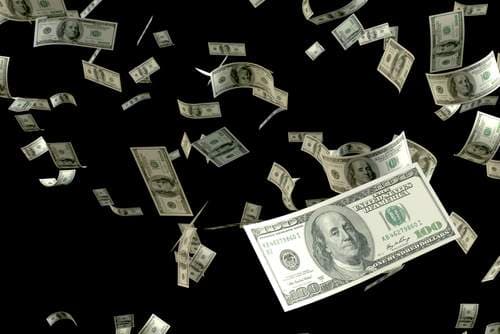Beneath the Surface
M2 Money Supply Has Hit New All-Time Highs
August 11, 2025 • 3 minute, 54 second read

“The U.S. is flooding the bond market with so much supply to fund deficit spending that bond prices are falling.”
— Kobeissi Letter
August 11, 2025 — Bond yields have now been going the wrong direction ever since the Fed’s half-point cut last September.
It’s also worth noting that the yields on the U.S. 30-year are also running hot:

Looking like they could crack 5% at some point, and the Treasury’s most recent projections on the next couple quarters of debt issuance might help tip the scales:
We frequently talk about the global financial system “flashing bright red warning lights” and “slowly coming unglued” – this is exactly what we mean.
Weird divergences between interest rates and bond yields, bizarre mis-pricings in the market (i.e: German 30-year paper trades at the same rate as Japan’s. German interest rate: 2.25%, debt-to-GDP: 62%. Japan? 0.05% interest rate and 250% debt-to-GDP. Both 30-year bonds yield 3.1%).
How can that be possible? It means the global bond markets are cracking up – and remember something else we’ve always said from the very beginning: our base case thesis for bitcoin is that it’ll have multi-decade long tailwinds in the form of a secular bond exodus.
How many are aware that U.S. M2 just hit fresh all-time highs, nudging past COVID levels after a brief (not to mention aberrant) period of tightening?

The US government is now adding an extra trillion dollars in debt every 100 days.
You don’t hear any of this being scrutinized on CNBC or in the Financial Times because it’s just too big to think about, let alone rectify.
The M2 high was posted in the June dataset and there’s been no real acknowledgements of it. It was remarked upon at the time by Rob & Sam Kovacs via Seeking Alpha and Coindesk ran a piece about a week later, which did trickle out via Yahoo Finance. That’s about it.
The “conventional wisdom” around bitcoin and gold was that these assets required low interest rates and rising money supply to make “number go up”, but the first two years of this cycle saw BTC go practically straight up, against a blistering rate hiking cycle and declining M2.
(When it comes to gold, I also like to point out to those who say it requires lower rates, that the entire second leg of the 1970’s gold super-spike occurred against a backdrop of rising real rates).
What happens now that rates really have one direction to go (yields be damned, more inflation) and M2 is back on track to infinity?
Gold and Bitcoin have been taking turns notching up all-time highs for about the last year, and now M2 is joining the race.
Last week, the Aug 6th U.S. 10-year auction “tailed”, with the lowest bid-to-cover in a year. This is telling us that U.S. debt, ostensibly the global financial systems “risk free” asset, is increasingly being seen as more risky (“return free risk”, as Lacy Hunt once dubbed bonds).
It’s almost as if the illustration I put into my Crypto Capitalist Manifesto back in 2021 is playing out exactly as I foretold: hard assets like gold and bitcoin were going to experience multi-decade tailwinds from a global bond exodus:

The signals are clear: gold, silver (which is breaking out) – and bitcoin are all experiencing capital inflows – meanwhile bonds are dead money walking.
The next Fed M2 supply update comes on August 26th – does anybody think it’ll come in lower?
Regards,
Mark Jeftovic
Dollarcollapse.com & Grey Swan Investment Fraternity
P.S. from Addison: Paid-up members of the Grey Swan Investment Fraternity can catch Mark’s views on the rise of the M2 money supply and the upside in hard assets like gold and “digital gold,” bitcoin in Grey Swan Live! archives. We recorded the session on Thursday; it has now been edited and posted to the site.
If you’re not a paid-up member, you can review our gold forecast here.
Spoiler alert: the sharp rise in the global money supply plays a starring role in our gold forecast. With the dollar inherently structured to lose purchasing power, you owe it to yourself and your family to protect your money.
A special note to Grey Swan subscribers: This week’s Grey Swan Live! will be held on Friday at 11 AM, not Thursday. We’re in the middle of some new groundbreaking research – and will have even more details that afternoon. But our paid-up Fraternity members will get an early sneak peek at what we see developing.
For now, mark your calendar:
Sneak Peek Grey Swan Live!
Friday, August 15, 2025
11am ET
Your thoughts? Please send them here: addison@greyswanfraternity.com



